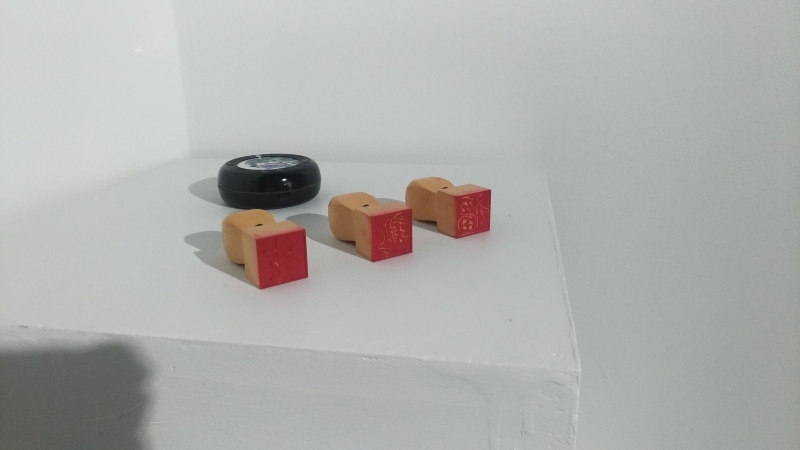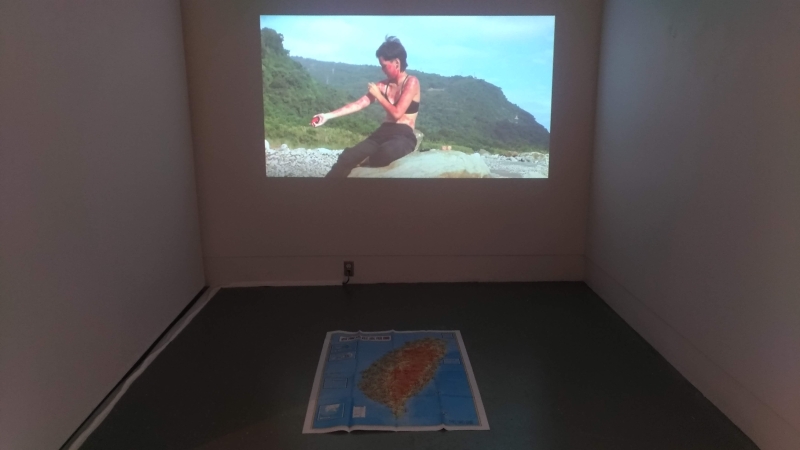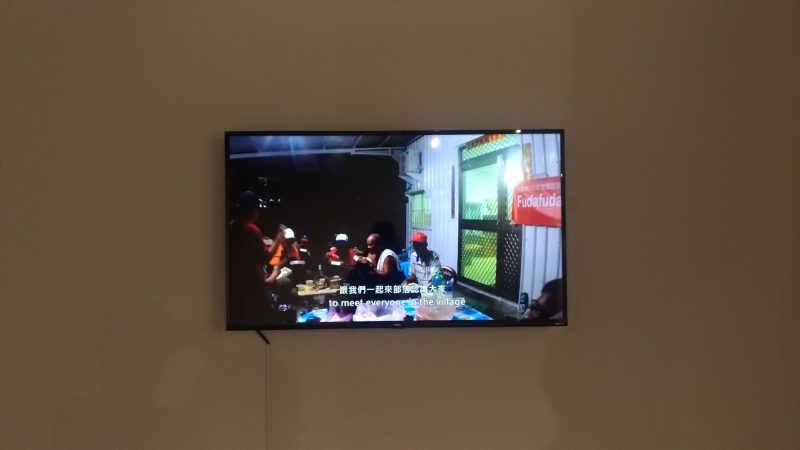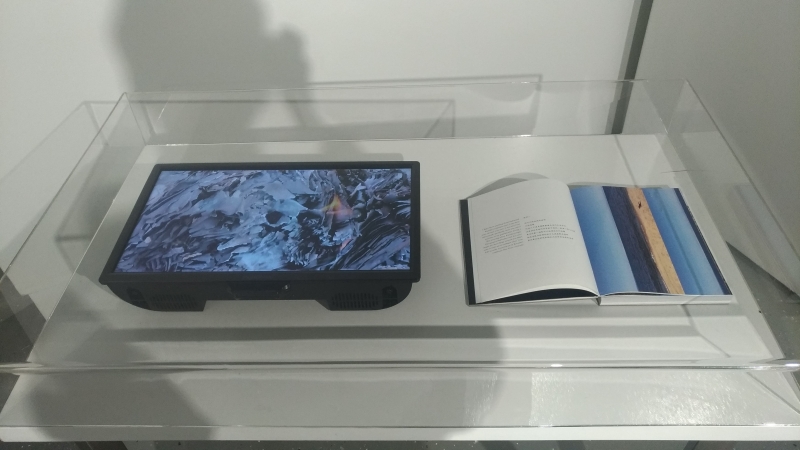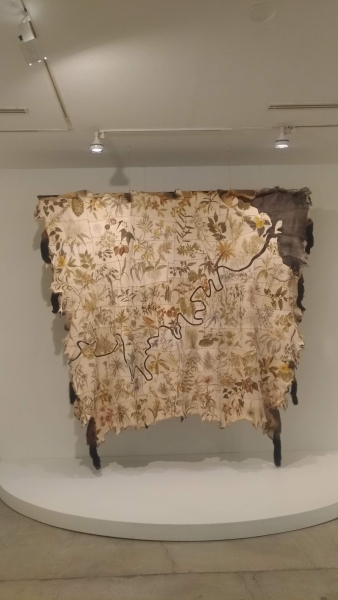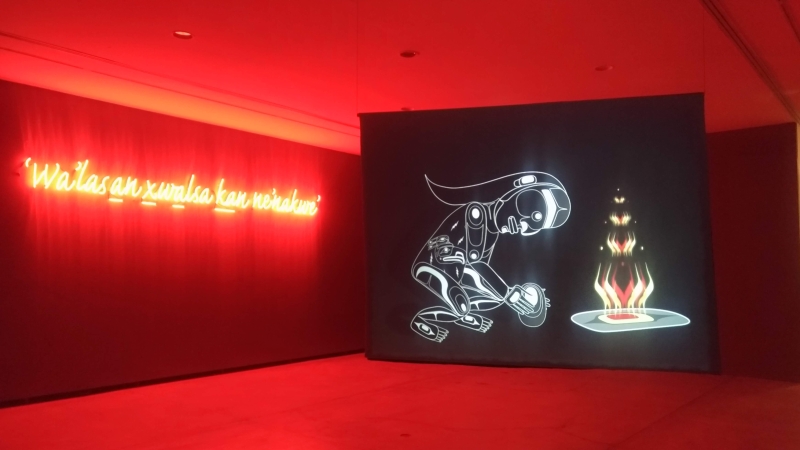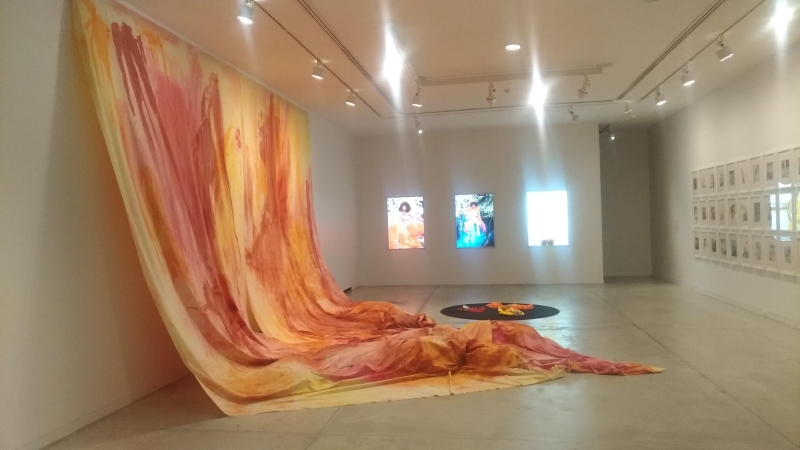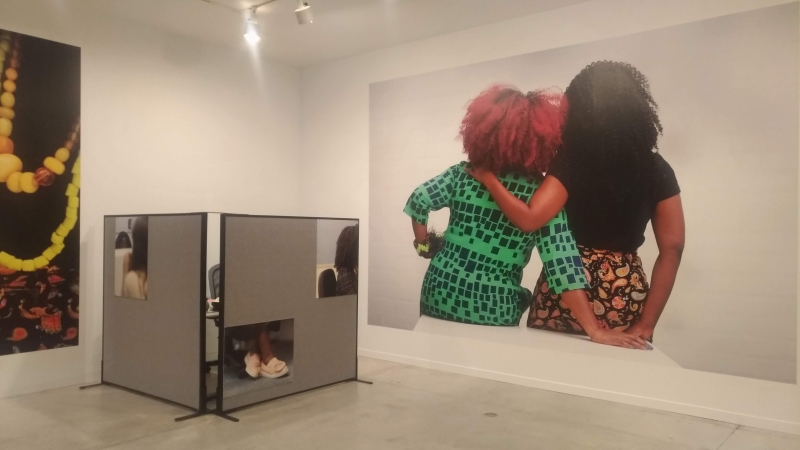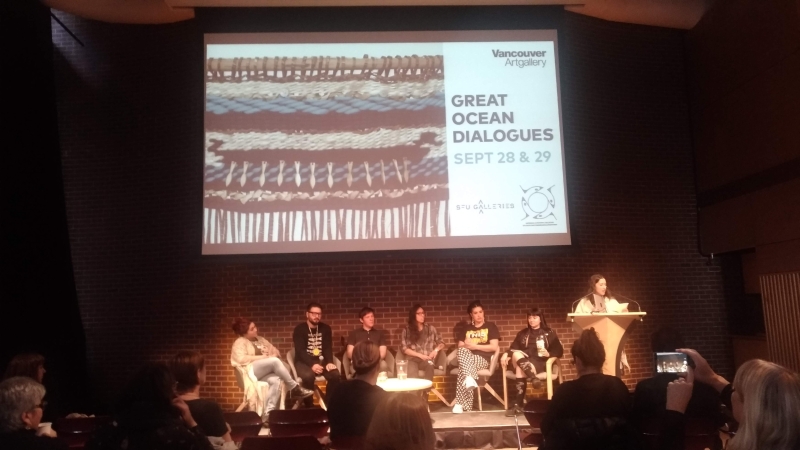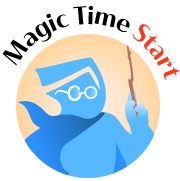受邀於加拿大Rotary藝術中心「Un-Ripening: Recipes for De-Colonisation」展覽
林安琪
主辦單位扶輪藝術中心是加拿大基洛納市(City of Kelowna)當地推廣文化的重鎮,隔壁是Kelowna市立美術館,兩個藝術中心也是位於白人較密集的地方,而近幾年來,自從加拿大政府跟他們原住民(所稱第一民族)道歉後,加拿大政府組織「真相與和解」政策和委員會(Truth and Reconciliation Commission),「真相與和解」政策貫穿各種成面,如:各白人群體主導的非營利藝術機構必須還給加拿大原住民原本的話語權,也就是說,藝術展覽要有更多給予加拿大原住民與社會對話的空間和能見度,而「解殖」議題在加拿大是永遠要解決的議題,如此加拿大藝術機構方面也開始對於國際他國對於「解殖」議題開始感到興趣,因為可以馬上與當地議題產生直接的對話。本次「Un-Ripening: Recipes for De-Colonisation」展覽的時間點刻意設計與溫哥華美術館剛開展的「飄洋與回歸」當代原住民展覽、和在渥太華舉行的加拿大原住民族真相與和解會議同一時間點上,本次展覽所展現的現今原住民族的生活面貌、身份認同的憂慮,已經進一步地與該地區原住民產生更深一層的對話,這也是該藝術中心第一次邀請台灣藝術家舉辦展覽,該展覽也讓許多當地加拿大人發現原來台灣也有原住民而非只有漢文化,對話與互相了解的過程也是這次展覽最為重要的,可以看出該藝術中心對於「解殖」和「如何解殖」之議題非常重視,因為只有解殖才能真正地來討論多元文化。
去熟化:解殖的食譜(Un-Ripening: Recipes for De-Colonisation)展覽作品
1. 林安琪《生、熟、福》
媒材:錄像行為、印章、紙
概念:「生、熟、福」作品的創作靈感來自於自我尋根的過程中的反省,面對於身份認同得依靠無情的日據時期戶口名簿所登記的人種分類法來了解自己,而自身原住民身份還得繼續使用充滿歧視的前殖民政府的同化歸類法,來證明現今我們的原住民身份,如此歸類法可回朔到中國清政府至日據時期。透過「生、熟、福」作品,我想詢問為什麼我的身份認同必須依賴於充滿歧視用語的前殖民文件,為什麼我的身份認同不是來自於家族口傳下來的歷史故事呢?生、熟、福 每個字我刻在一個印章上,然後開始往身體烙印蓋章,有如戶口名簿,我的身體從祖先開始一直被標籤化,印章有如權力賦予標籤化的合法性。
生、熟、福 (sheng/shou/fu) is a self-reflection of how my identity is obtained based on heartless colonial paperwork from the Japanese period and how we indigenous peoples were being classified based on levels of assimilation devised by the Chinese Qing dynasty and onto the Japanese. I ask questions of why my identity was not passed down through my family's oral stories. 生、熟(sheng/shou)these 2 characters have a discriminatory tone of voice; each character is like a label imposed on my body by stamps usually representing authority.
2. 林安琪《紋面》
媒材:錄像行為
概念:「紋面」錄像行為通過在我的臉上粘貼透明膠帶並試圖繪製傳統泰雅族女性紋面圖案,然而透明膠帶封住了我的嘴巴,這是自我體驗到泰雅文化的聲音在現實中已被沉悶住,這件作品是關於過往與現在,兩個相互衝突的事實表達我所感受到對於泰雅文化的超脫與異化。
This video performance project appears to identify with Atayal females by sticking transparent tape on her face and painting on common patterns of facial tattoo worn by females in a traditional Atayal culture. However, the tape also seals the artist's mouth, a symbol of muffled voice in the reality she experiences. The play on two conflicting facts powerfully conveys the detachment and alienation the artists feels for her own heritage.



